Cooling
Data center cooling refers to the collective equipment, tools, techniques and processes that ensure an ideal operating temperature within a data center facility. Proper data center cooling ensures that the data center is supplied with enough cooling and ventilation necessary to keep all devices and equipment within the desired temperature range. Getting the best performance out of your data center cooling system is crucial to its overall efficiency and operational cost.
IDCS has partnered with leading vendors which has a proven track record of providing the most energy efficient cooling solutions in the market. We offer modular and fully scalable cooling solutions provide air distribution and heat removal at rack, row and room level, eliminating hot spots and giving you the most effective performance for the least usage of floor space. We have in-house mechanical experts who can help identify your cooling needs and recommend the best cooling system for your facility.
Computer Room Air Conditioner (CRAC)
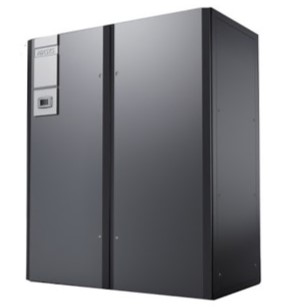
Computer room air conditioning (CRAC) is a unit that is used to monitor and maintain the temperature of room in which the computing equipment operates. They maintain the proper air distribution and humidity of the network room.
Down flow configuration are the most common design for data center cooling systems, and are named as such due to AC units handle the air.
Down flow CRAC units work on the basis of air temperature density and how they interact with each other. As cold air is denser, it sinks below the hot air, and as the hot air is removed, the cold air rises to replace it.
In-Row Cooling
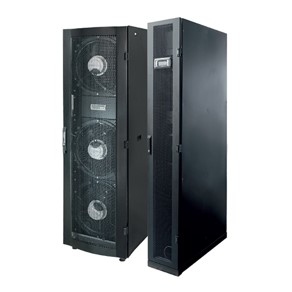
In-row cooling technology is a type of air conditioning system commonly used in data centers in which the cooling unit is placed between the server cabinets in a row for offering cool air to the server equipment more effectively.
In-row cooling systems use a horizontal airflow pattern utilizing hot aisle/cold aisle configurations and they only occupy one-half rack of row space without any additional side clearance space. Typically, each unit is about 12 inches wide by 42 inches deep.
These units may be a supplement to raised-floor cooling (creating a plenum to distribute conditioned air) or may be the primary cooling source on a slab floor.
In-Rack Cooling
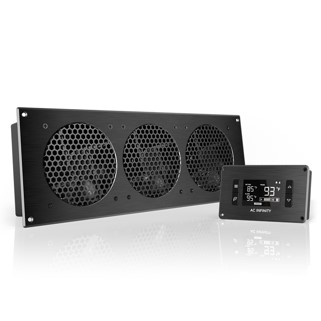
In-rack cooling refers to cooling systems that are often used in small data centers or in high-density areas inside large data centers, or to supplementary cooling systems used in high-density environments.
An in-rack cooling system cools down the servers placed within closed rack cabinets. Both the cabinets and the in-rack coolers have been developed specifically to avoid the mixing of warm and cold air. This cooling system operates at a higher temperature than other types of cooling systems.
This results in a better level of free cooling, which is cost-effective as well. In-rack cooling offers an ideal computing environment, that is, a microclimate that is thermally neutral to other parts of the room.
Spot Cooling
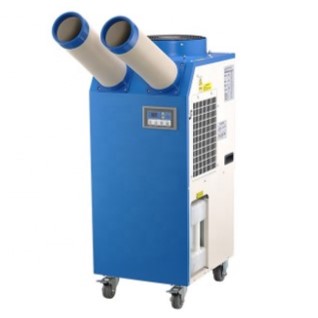
Spot cooling refers to portable air-conditioning that is used in overheated areas in a large space such as in a major data center. Spot coolers are self-contained units that consist of a compressor, condenser coil and evaporator coil in a single unit.
Spot coolers can be placed in the areas that require consistent temperatures. They are generally used to maintain certain temperature in an enclosed room with large number of servers and IT equipment that generates a lot of heat.
Spot coolers provide a convenient and cost-effective way to cool large data centers and can be used in leased office spaces, where the installation of other types of cooling systems may be prohibited.
Aisle Containment System
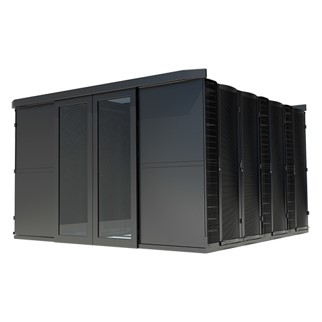
Aisle containment system is a primary way leading businesses today help reduce the use of energy and optimize their equipment’s performance within their data center.
Adopting a cold and/or hot aisle containment containment fully separates the cold supply airflow from the hot equipment exhaust air. By implementing this solution increases air efficiency, translating to increased up-times, longer hardware life and valuable energy savings.
This simple separation creates a uniform and predictable supply temperature to the intake of IT equipment as well as a warmer, drier return air to the AC coil.
Raised Access Floor System
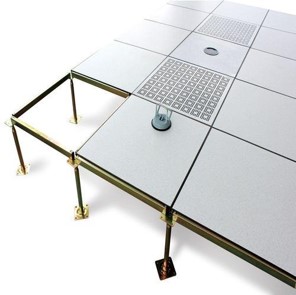
A raised floor is a data center construction model in which a slightly higher floor is constructed above the building’s original concrete slab floor, leaving the open space between the two floors for wiring or cooling infrastructure.
The raised floor model was once the standard way to deliver power and provide connectivity in the data center. However, newer design models move cabling overhead into cable trays and use the space beneath the raised floor for water-cooling pipes and airflow for hot and cold aisle cooling systems.
One important goal of raised floor implementations in the data center is to reduce the intake air temperature of IT equipment and servers.
We are on hand to discuss your specific requirements
Our team of experts can review your current Cooling plans or arrangements to ensure they meets the needs of your business or project. If an off-the-shelf solution isn’t suitable, we will work with you to deliver a bespoke solution.
We are here to talk 9:00AM to 6:00PM, Monday to Friday